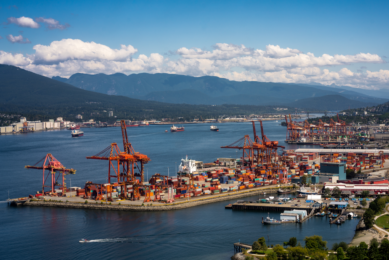EmbryoGENE Network uses Hypor Herd
Hypor is pleased to announce its participation in the NSERC EmbryoGENE Research Network, whose goal is to develop diagnostic tools for evaluating embryonic development in pigs and cattle.
The Network is funded by a number of major and minor partners including the Canadian Federal Government, and is based in Canada. The acronym GENE stands for Genomics, Epigenetics, Nutrition and Environment.
Hypor is considered a major partner in the EmbryoGENE Research Network. The swine herd at the University of Alberta is a Hypor herd, and many pig tissues used for research by the Network is based on Hypor genetics.
“Hypor has a keen interest in understanding reproductive processes better. It can better provide us with fundamental knowledge for utilization of reproductive techniques, like A.I., embryo transfer and embryo preservation. As well, the impact of nutrition and genetics on reproductive performance can be understood better. Our interest is in increasing embryo and foetal survival to help serve our customers,” said Benny van Haandel, Hypor’s R&D chief.
The Network’s mandate is to look at both pigs and cattle. The research with pigs will be headed up by the University of Alberta, while the University of Laval will focus on cattle. “As far as reproductive physiology goes, we know we can affect the ability of an embryo to survive – by not feeding a sow properly, for instance. We have a similar situation with embryo transfer – we know we are compromising the embryo as soon as we take it out of the uterus. However, we do not have diagnostic tools to know why we affect these changes.
“The idea behind this project is to look at the gene expression profile that is present in a normally developing embryo during early development and come up with a set of diagnostic tools.,” said Michael Dyck from the University of Alberta and a participant in the EnbryoGENE Research Network.
The Network will aim to define what genes should be expressed at each stage of development. “If we can define what is normal, then we can change protocols and see which genes are either being or not being expressed,” Dyck said.
He explained that the benefit of working with pigs and cattle is that each species has a different area more developed than the other: In pigs there has been good work done developing models on the effects of nutrition on embryo development, while the ability to apply reproductive technology is less developed. In cattle, this is reversed with better knowledge of reproductive technology. The EmbryoGENE Research Network has already begun its work and has a mandate to continue until 2012.
Related Website
• Hypor
Click here for the free Pig Progress newsletter
Hypor is considered a major partner in the EmbryoGENE Research Network. The swine herd at the University of Alberta is a Hypor herd, and many pig tissues used for research by the Network is based on Hypor genetics.
“Hypor has a keen interest in understanding reproductive processes better. It can better provide us with fundamental knowledge for utilization of reproductive techniques, like A.I., embryo transfer and embryo preservation. As well, the impact of nutrition and genetics on reproductive performance can be understood better. Our interest is in increasing embryo and foetal survival to help serve our customers,” said Benny van Haandel, Hypor’s R&D chief.
The Network’s mandate is to look at both pigs and cattle. The research with pigs will be headed up by the University of Alberta, while the University of Laval will focus on cattle. “As far as reproductive physiology goes, we know we can affect the ability of an embryo to survive – by not feeding a sow properly, for instance. We have a similar situation with embryo transfer – we know we are compromising the embryo as soon as we take it out of the uterus. However, we do not have diagnostic tools to know why we affect these changes.
“The idea behind this project is to look at the gene expression profile that is present in a normally developing embryo during early development and come up with a set of diagnostic tools.,” said Michael Dyck from the University of Alberta and a participant in the EnbryoGENE Research Network.
The Network will aim to define what genes should be expressed at each stage of development. “If we can define what is normal, then we can change protocols and see which genes are either being or not being expressed,” Dyck said.
He explained that the benefit of working with pigs and cattle is that each species has a different area more developed than the other: In pigs there has been good work done developing models on the effects of nutrition on embryo development, while the ability to apply reproductive technology is less developed. In cattle, this is reversed with better knowledge of reproductive technology. The EmbryoGENE Research Network has already begun its work and has a mandate to continue until 2012.
Related Website
• Hypor
Click here for the free Pig Progress newsletter











